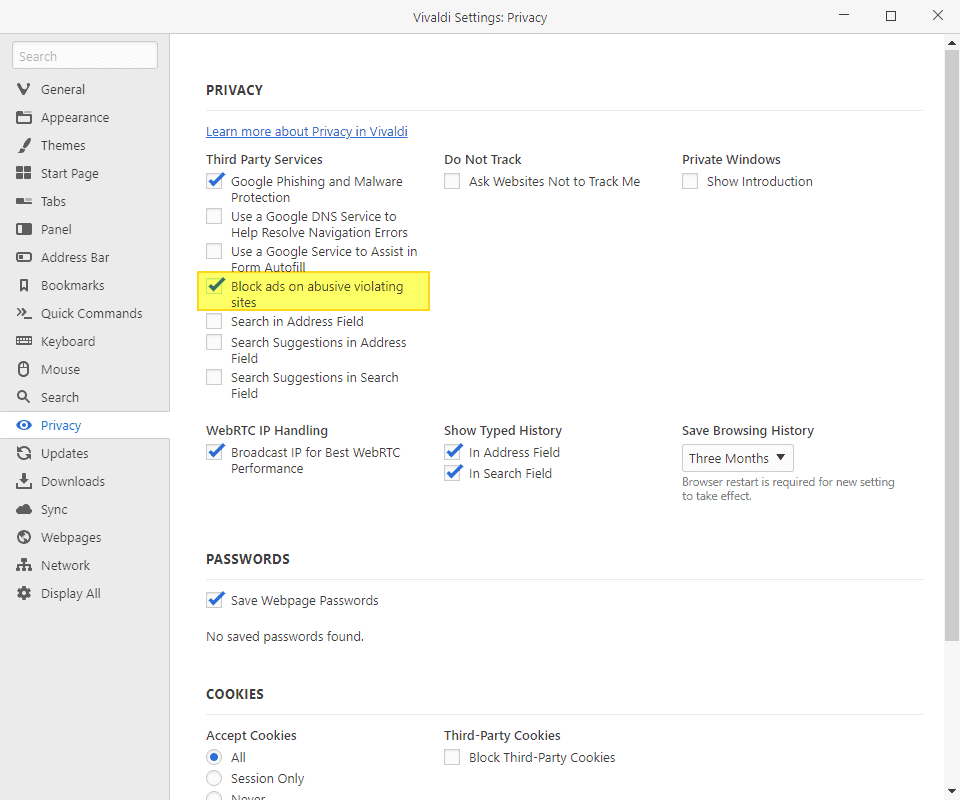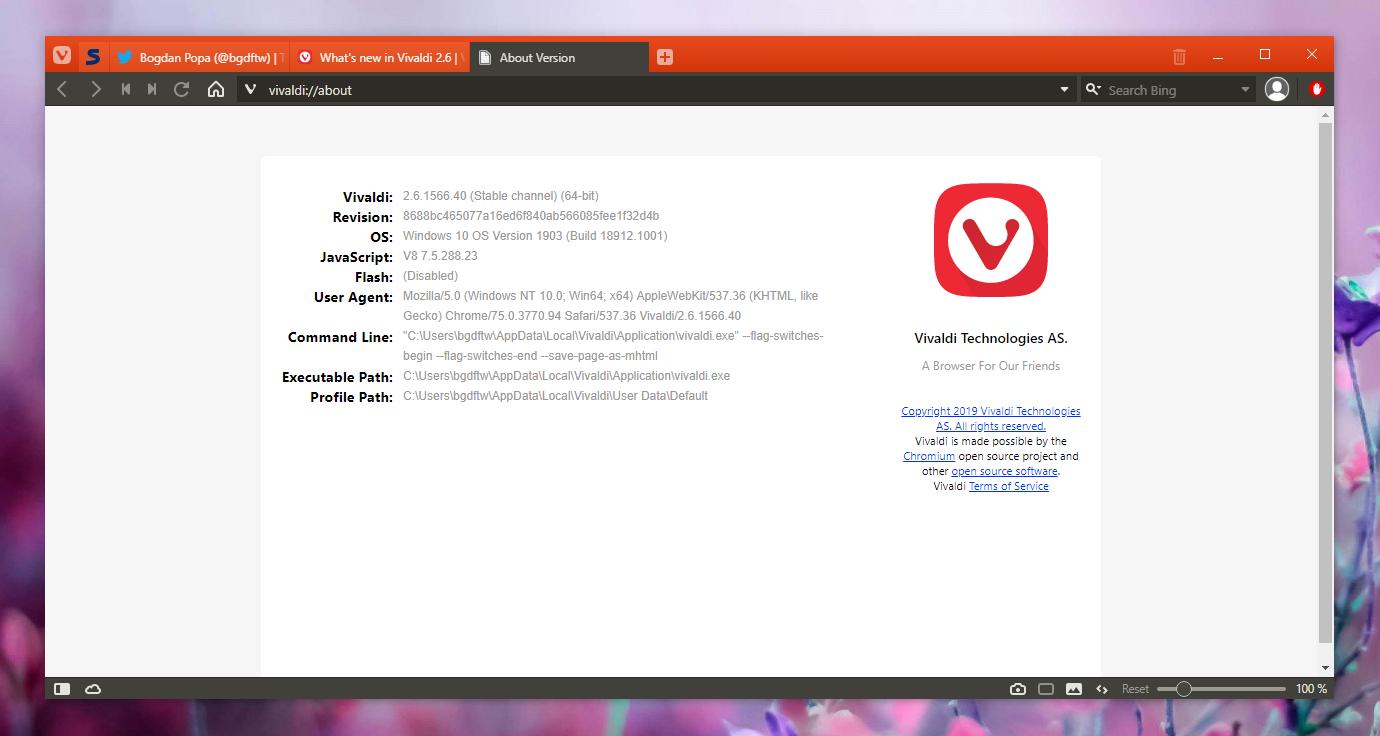- Nov 10, 2017
- 3,250
Vivaldi Technologies is working hard on getting Vivaldi 2.6 out to the browser's stable channel. The most recent Vivaldi 2.6 snapshot introduces several new features in the browser including one that will block abusive advertisement practices by default.
Vivaldi, which is based on Chromium, uses the same blocklist that Google uses for its Chrome web browser.
Google started to integrate ad-blocking functionality in Chrome for Android in mid-July 2017 and introduced the functionality in desktop versions of the browser in February 2018.
Most ad-blockers make no distinction between different types of advertisement or how it is served. There are some solutions that allow some ads to pass through, AdBlock Plus being the prime example with its acceptable ads initiative, and Google's implementation follows a similar methodology. Instead of blocking all ads, Google, an advertising company first and foremost, blocks only some ads in Chrome based on certain criteria.
On desktop for example, popup ads or auto-playing video ads get blocked, and so is content or advertisement that Google considers abusive.
Vivaldi 2.6 and abusive experience protections

Vivaldi 2.6 will block advertisement that is considered abusive. The browser uses Google's blocklist to make the determination. Google lists the following experiences as abusive at the time of writing:
Vivaldi Technologies has no control over the list, however. It is created and maintained by Google. Vivaldi users may disable the new feature in the following way once Vivaldi 2.6 lands:
Closing Words
Vivaldi protecting users against abusive experiences is a welcome addition. Users who don't want to be exposed to any ads can still use ad-blockers to block these.
Source

 www.ghacks.net
www.ghacks.net
Vivaldi, which is based on Chromium, uses the same blocklist that Google uses for its Chrome web browser.
Google started to integrate ad-blocking functionality in Chrome for Android in mid-July 2017 and introduced the functionality in desktop versions of the browser in February 2018.
Most ad-blockers make no distinction between different types of advertisement or how it is served. There are some solutions that allow some ads to pass through, AdBlock Plus being the prime example with its acceptable ads initiative, and Google's implementation follows a similar methodology. Instead of blocking all ads, Google, an advertising company first and foremost, blocks only some ads in Chrome based on certain criteria.
On desktop for example, popup ads or auto-playing video ads get blocked, and so is content or advertisement that Google considers abusive.
Vivaldi 2.6 and abusive experience protections

Vivaldi 2.6 will block advertisement that is considered abusive. The browser uses Google's blocklist to make the determination. Google lists the following experiences as abusive at the time of writing:
- Fake Messages, e.g. warnings or system dialogs.
- Unexpected click areas, e.g. non-visible page elements.
- Misleading site behavior, e.g. ads that use play buttons or next arrows.
- Browser history manipulation, e.g. when sites inject content into the history.
- Social engineering, e.g. ads that try to steal personal information or try to trick users.
- Auto redirect, e.g. sites that redirect users without action from the user.
- Mouse pointer, e.g. content that resembles a clicking mouse pointer to get users to interact with it.
- Malware or unwanted software, sites that host, promote, or link to malware or unwanted software.
Vivaldi Technologies has no control over the list, however. It is created and maintained by Google. Vivaldi users may disable the new feature in the following way once Vivaldi 2.6 lands:
- Select Vivaldi Menu > Tools > Settings, or use Alt-P to open the Preferences using the shortcut.
- Switch to the Privacy section.
- Remove the checkmark from Block ads on abusive violating sites. This turns the functionality off in the Vivaldi browser.
Closing Words
Vivaldi protecting users against abusive experiences is a welcome addition. Users who don't want to be exposed to any ads can still use ad-blockers to block these.
Source

Vivaldi 2.6 will block abusive advertisement by default - gHacks Tech News
The upcoming Vivaldi 2.6 web browser will block abusive advertisement practices by default using Google's abusive experiences blocklist.

